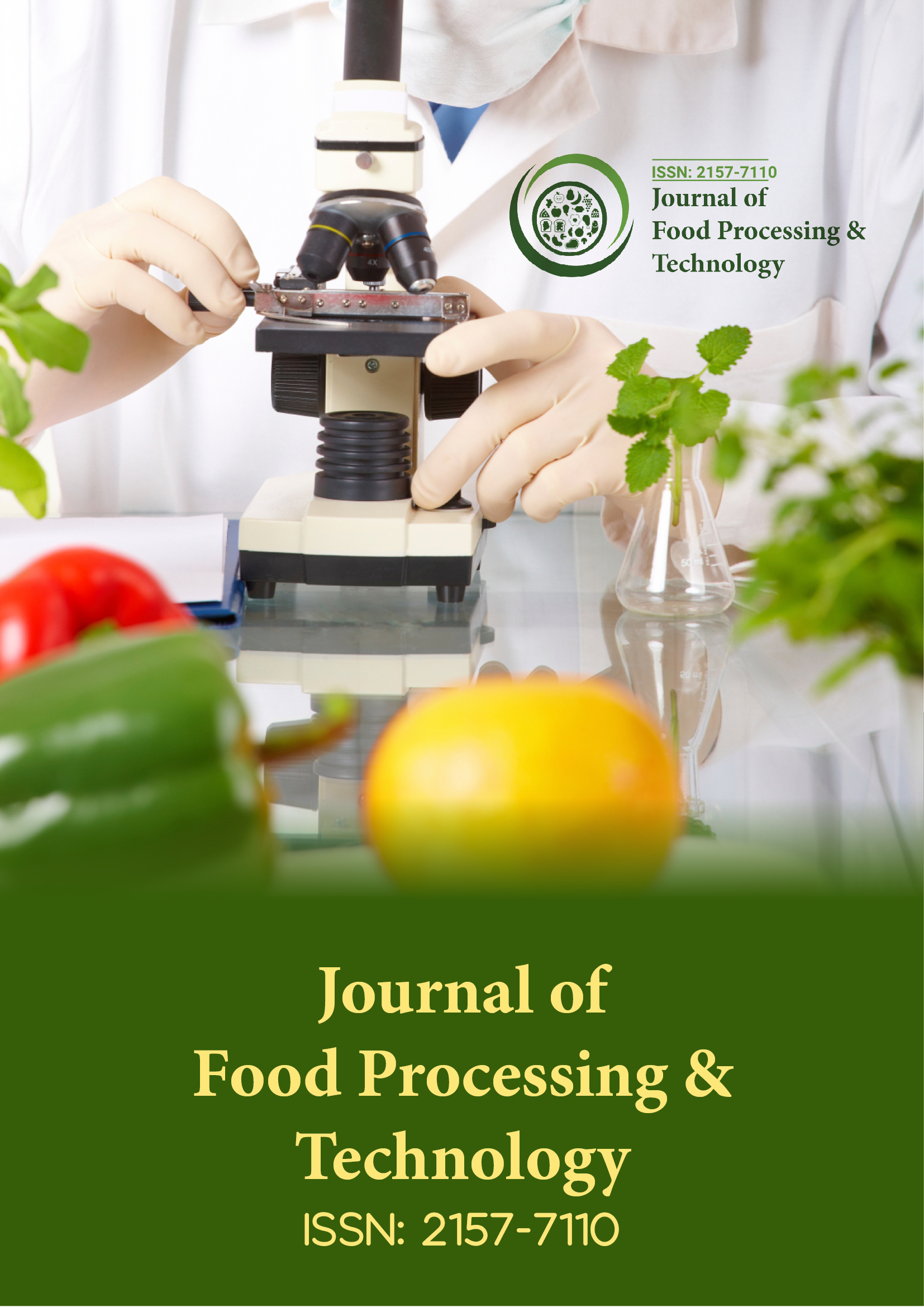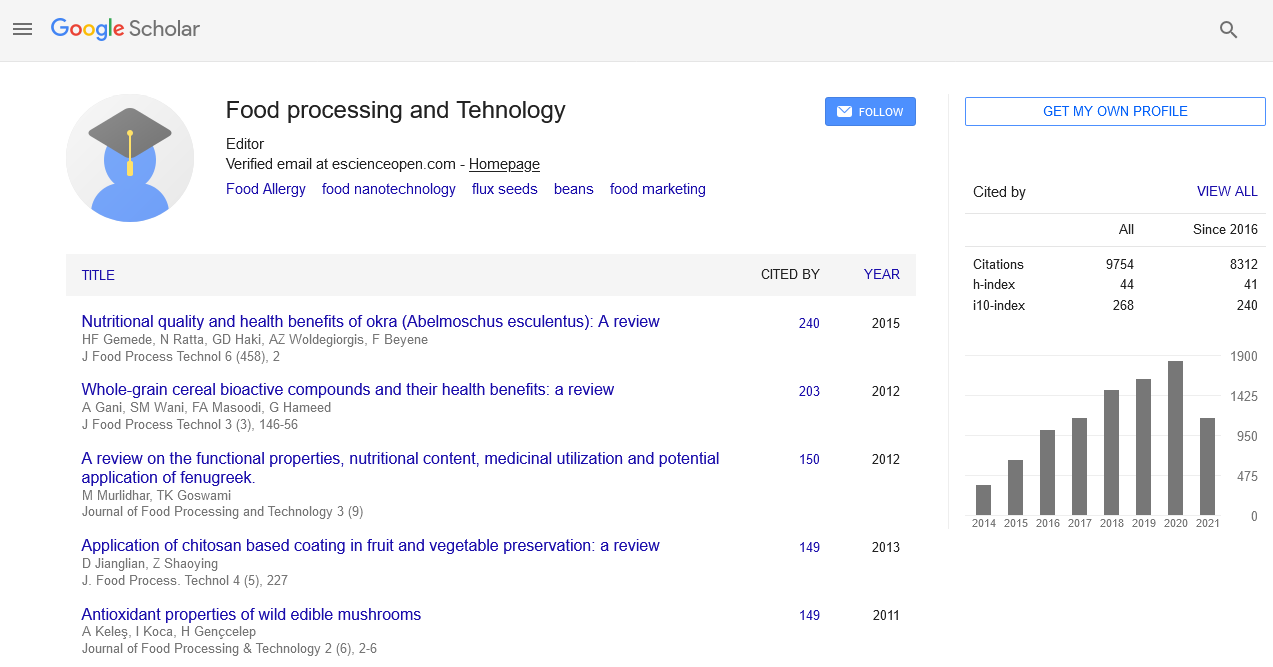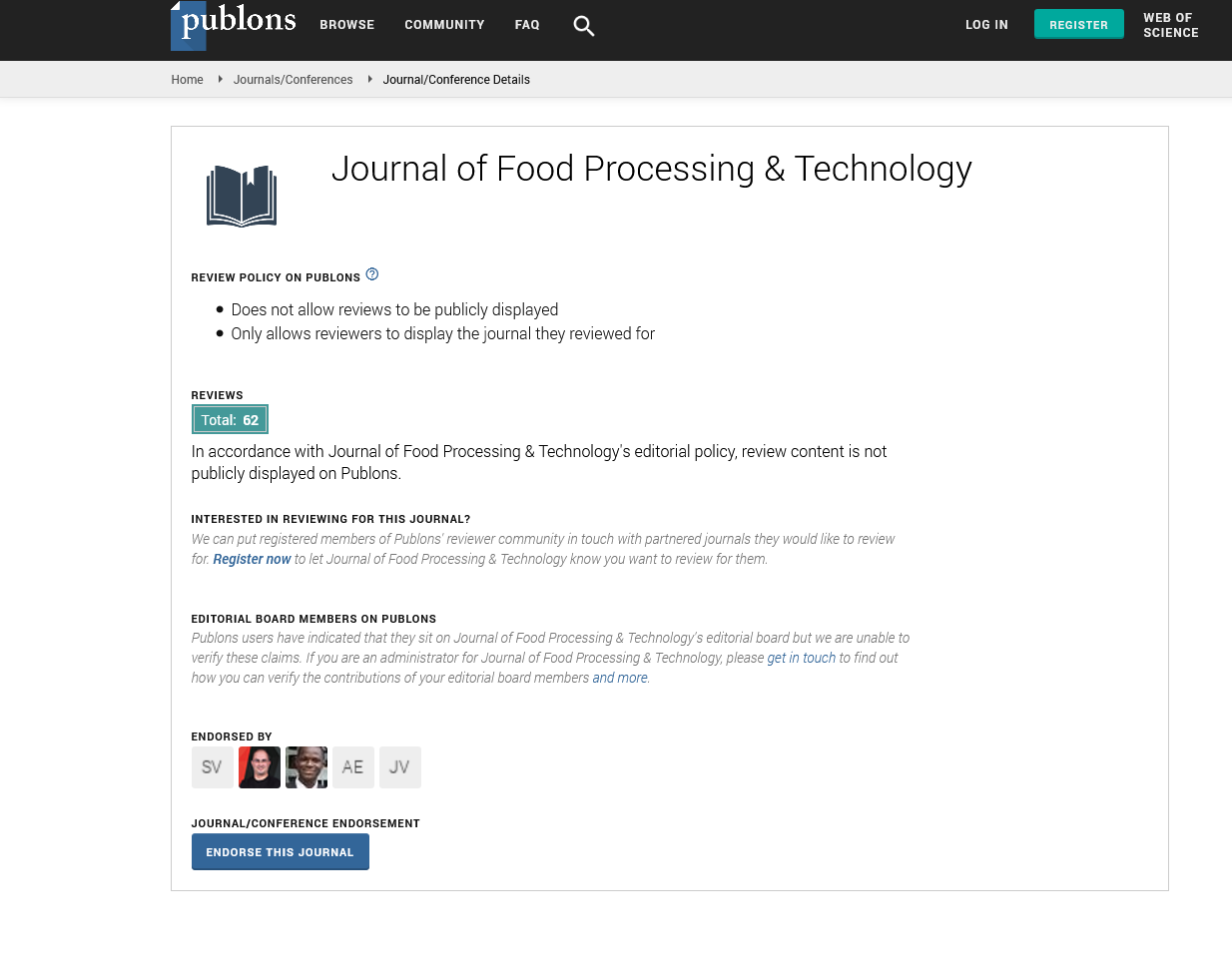Indexed In
- Genamics JournalSeek
- Academic Keys
- JournalTOCs
- China National Knowledge Infrastructure (CNKI)
- Access to Global Online Research in Agriculture (AGORA)
- Centre for Agriculture and Biosciences International (CABI)
- RefSeek
- Directory of Research Journal Indexing (DRJI)
- Hamdard University
- EBSCO A-Z
- OCLC- WorldCat
- Scholarsteer
- SWB online catalog
- Publons
- Euro Pub
- Google Scholar
Useful Links
Share This Page
Journal Flyer

Open Access Journals
- Agri and Aquaculture
- Biochemistry
- Bioinformatics & Systems Biology
- Business & Management
- Chemistry
- Clinical Sciences
- Engineering
- Food & Nutrition
- General Science
- Genetics & Molecular Biology
- Immunology & Microbiology
- Medical Sciences
- Neuroscience & Psychology
- Nursing & Health Care
- Pharmaceutical Sciences
Abstract
Studies on Physical and Bio-Chemical Traits Variation in Reddish-Brown and Brown Pulp Indian Date (Tamarindus indica L.) Genotypes
Rajender Kumar*, A L Palande, V R Joshi, S S Kulkarni, P D Dalve and S M Choudhary
Variability analysis was performed to investigate the physical, yield and bio-chemical attributes of twenty different tamarind genotypes. The experiment was conducted during the year 2018 and 2019 at the instructional-cum-research farm, department of horticulture, Mahatma Phule Krishi Vidyapeeth, Rahuri, Dist. Ahmednagar. The genotypes were evaluated for various traits with the major emphasis on pulp colour, pulp percentage, yield, yield efficiency, TSS content and acidity percentage. On the basis of pulp colour, genotypes were grouped accordingly into 2 categories which consist of 3 reddish-brown and 17 brown pulp genotypes. The highest variability among reddish-brown pulp genotypes were observed with respect to yield efficiency (1.86 kg/m3 to 4.75 kg/m3); ascorbic acid content (1.50 mg/100 g to 2.70 mg/100 g); vein per cent (2.57% to 4.33%); yield per plant (42 kg to 66 kg) and seeds per pod (5 to 7.67) etc. Similarly, in brown pulp genotypes highest variability were observed for yield efficiency (0.53 kg/m3 to 5.81 kg/m3) followed by yield per plant (9 kg to 85 kg); average seed weight (2.37 g to 6.67 g); average pulp weight (8.02 g to 17.45 g) and for number of seeds per pods (4.33 to 10) etc. The genotypes like RHRTG 10, RHRTG 11 and RHRTG 14 were reported suitable for table fruit purpose because of their lesser acidity and more of TSS content and pulp percentage. The result also revealed that among the brown genotypes, RHRTG 4, RHRHG 5 and RHRTG 20 can be used for culinary purpose because of their high titratable acidity percentage. Among reddish-brown genotypes, RHRTH 16 was reported for maximum titratable acidity percentage which can be utilized in confectionery for storage purpose and for giving natural colour to sweets. In this experiment an approach was used to assess the bearing habits of genotypes per unit of canopy volume i.e., yield efficiency. Genotypes having high yield efficiency can be utilized in high density planting because of their lesser canopy volume and more yield per unit of canopy volume. The genotypes RHRTG 4 and RHRTG 15 were recorded superior for yield efficiency among brown pulp genotypes and RHRTG 16 among reddish-brown genotypes.
Published Date: 2024-08-12; Received Date: 2020-03-27


